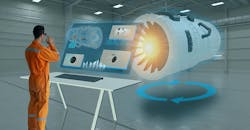A decade ago, manufacturers were worried about challenges like fragmenting customer demand, rising wages in low-cost regions, and the scarcity of talent. A complex and uncertain business environment appeared to be driving change. Managers who hadn’t yet gone through a significant global-scale crisis were hit by the Great Recession of 2008–2009, and started thinking about the long-term value of strengthening business and operations with digital technologies. All this was before the COVID-19 crisis, before China became a frenemy and Russia became an outcast.
The 2010s saw an escalating push to establish circular economies, or processes in which reuse, remanufacture, and recycling is prioritized. This came hand-in-hand with the campaign to develop sustainable manufacturing. Such strategies have included optimization of materials, waste management, increased energy efficiency, reduced water usage and adoption of low-carbon technologies. In retrospect, we can see how slowly manufacturing organizations came around to adopting sustainability policies and metrics.
What was the future of manufacturing at that point? Analysts touted the power of data streams enabled by information and communications technology (ICT) infrastructure and sensors. AI was not yet at the forefront of digital strategies. Instead, companies were investigating the benefits of real-time Big Data, IoT solutions, advanced automation, collaborative robots and cloud computing.
Global responses to Covid-19 changed everything: So, what makes the future of manufacturing different now than it was then?
Population in the West continues to decline, and the global fertility rate is also falling. This could lead to a dire shortage of workers across the board.
The economic conflict between China and the U.S. has been ongoing since the U.S. imposed tariffs and other trade barriers in 2018.
The democratization of AI has begun. AI is becoming a powerful tool to manage complex data environments and grant people capabilities beyond their mental horizons.
The ongoing campaign to limit global warming features emissions-cutting measures.
Most manufacturing and supply chains were unprepared for the Covid upheaval. After the initial shock of lockdowns, skyrocketing prices, and shortages, companies started to “think digital.” The two-year crisis period was a time of invention, innovation, remote collaboration, and flexibility. Digital became an inseparable element of operations, R&D and customer interaction.
The future of manufacturing was envisioned as relying on extensive use of collaborative and cloud-based solutions, human-less automation, and digital twins for prototyping, simulation, and new-technology commissioning. Connectivity and data availability became pillars of manufacturing and supply chain management.
Resiliency in manufacturing has improved as digital technology and connectivity have become an integrated part of business worldwide. Manufacturers have learned to tame supply chains, post-pandemic, but geopolitical turmoil has spawned new challenges and is driving a wave of trade and manufacturing protectionism. Countries are investing to stay competitive, especially in energy and other critical sectors like chips, electric batteries, and defense manufacturing. Reshoring and near-shoring are signal that the world is struggling to regain balance, but there will be no going back to the world of the 2010s.
A number of futures were created in the last decade. Each perspective was based on the way we understood the world according to the inputs, experiences, and parameters we were able to calculate, estimate, and model.
Today, the ways we live, consume and produce are continually being disrupted by technology, arriving in shorter and shorter cycles — the latest being AI.
Generative AI (GenAI) focuses on the creation of new and original data (e.g., images, text, audio, other types of content). It may change how people and technology work together or augment each other. The frenzy of attention that greeted GenAI in 2023 confirmed that we live in an “AI everywhere” world.
Despite being a very new technology in manufacturing, early adopters of generative AI technology are emerging. These organizations are piloting ChatGPT-like tools that provide users with information, content or code. Moreover, GenAI can be integrated into enterprise solutions such as enterprise resource planning, product lifecycle management, and customer relationship management systems.
Referred to as “co-pilots,” GenAI technologies can be embedded into such systems to assist human users in generating and comprehending complex content. Additionally, developers can use GenAI to create or enhance use cases and develop applications.
Digital twins — a virtual representation of an object and/or process — are also knocking at the door. This tool is still finding its way to broader adoption, but the industrial metaverse is already a thing. Immersive, hyper-realistic digital twins that blend simulation, collaboration, management, and closed-loop traceability have the potential to create a parallel global world of manufacturing and supply chains.
The future of manufacturing has thus entered an era of continual change. It is fueled by cloud and edge computing, AI, supercomputing GPUs and the steady pace of innovation.
My advice is to not overthink what the future will look like in manufacturing, or for energy or work, or for everything. Instead, strive to visualize your business as a resilient, customer-centric, self-learning and developing organization. Build capability to access the value of digital technology during the initial phase of its lifecycle. Technological innovation may threaten to overwhelm the most optimistic adopters, but the ability to assess, pilot, and scale will remain the crucial competitive differentiator.
Jan Burian is senior director, head of IDC Manufacturing Insights EMEA and leader of Europe: Future of Operations Practice.
